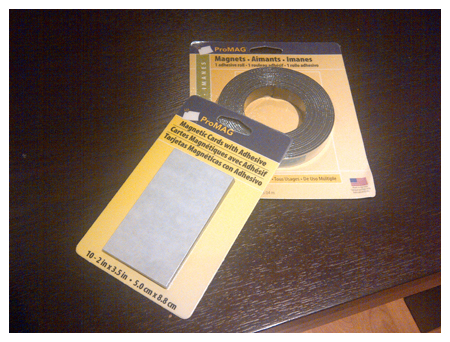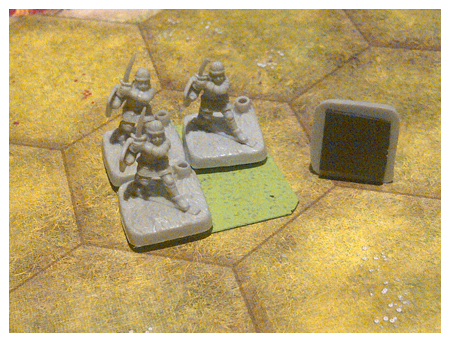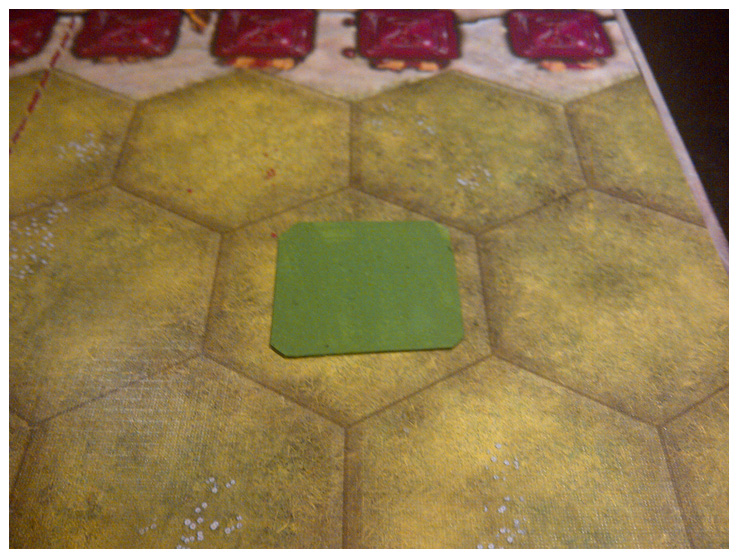Those of you who follow BattlePlay on twitter know that one game we return to often is BattleLore. Richard Borg’s Command and Colors is a great system for combat abstraction; players get the feel of large scale battles without the complexity of typical war game simulations. Two of the costs of entry to wargaming has always been the time involved in game setup and piece logistics. By piece logistics I am referring to the time invested in moving pieces about the board, straightening them when they become misaligned, and the general activities around keeping the gaming battlefield organized. These piece logistics are inherent in both counter and miniature wargaming.
BattleLore utilizes miniatures to represent troop units; four miniatures for infantry units and three larger miniatures for mounted units. During our games, whenever units are moved about the board, it is a certainty that the individual miniatures become misaligned, often ending up in other hexes and other orientations from the desired. At times I’ve noticed players becoming visibly frustrated while the unit they are moving becomes a pile of figures lying in and around the target hex. Well, I decided something had to be done about this. The money and time invested in BattleLore made it more imperative to improve the enjoyment of the game while reducing the annoyance of piece logistics.
 Enter the magnetic base. After evaluating several prototypes I came upon a combination of inexpensive and easily accessible magnets for use as both the unit bases and the figure bases. ProMAG brand magnetic business card sized magnets with adhesive backs make an excellent source for a unit base. They can easily be cut to size for either the four figure infantry bases or the three figure mounted bases. Leave the adhesive strip intact for a smooth gliding bottom. The top you can paint to match whatever board color you will be using the base on or whatever color strikes your fancy. For the BattleLore boards I used FolkArt Grass Green daubed on using a foam brush.
Enter the magnetic base. After evaluating several prototypes I came upon a combination of inexpensive and easily accessible magnets for use as both the unit bases and the figure bases. ProMAG brand magnetic business card sized magnets with adhesive backs make an excellent source for a unit base. They can easily be cut to size for either the four figure infantry bases or the three figure mounted bases. Leave the adhesive strip intact for a smooth gliding bottom. The top you can paint to match whatever board color you will be using the base on or whatever color strikes your fancy. For the BattleLore boards I used FolkArt Grass Green daubed on using a foam brush.
 For the figure bases I used the ProMAG 0.5” strip magnets again cut to size. squarers for the infantry bases and a bit longer of a rectangle for the mounted units. The magnets on the unit bases will snap to the unit base with enough strength to keep the figure on the base but not enough such that removing the unit to record losses is difficult. I find that slight pressure on one figure will slide the entire unit around the board easily. I bought the magnets I needed for a base game of BattleLore and a few expansions from Blick Art Supply for a reasonable cost.
For the figure bases I used the ProMAG 0.5” strip magnets again cut to size. squarers for the infantry bases and a bit longer of a rectangle for the mounted units. The magnets on the unit bases will snap to the unit base with enough strength to keep the figure on the base but not enough such that removing the unit to record losses is difficult. I find that slight pressure on one figure will slide the entire unit around the board easily. I bought the magnets I needed for a base game of BattleLore and a few expansions from Blick Art Supply for a reasonable cost.
This system could be used for any miniature game that suffers from burdensome piece logistics. Give it a try and let us know in the comments what new applications you find. Given the creativity of board gamers I expect to see improvements and configurations I haven’t thought of!





 morning and decided who better to get in on making board games than a printing company? Yaquinto printing went out and hired a couple of experienced game designers and set out to create the next generation of board games. One of these games in their initial run was
morning and decided who better to get in on making board games than a printing company? Yaquinto printing went out and hired a couple of experienced game designers and set out to create the next generation of board games. One of these games in their initial run was 